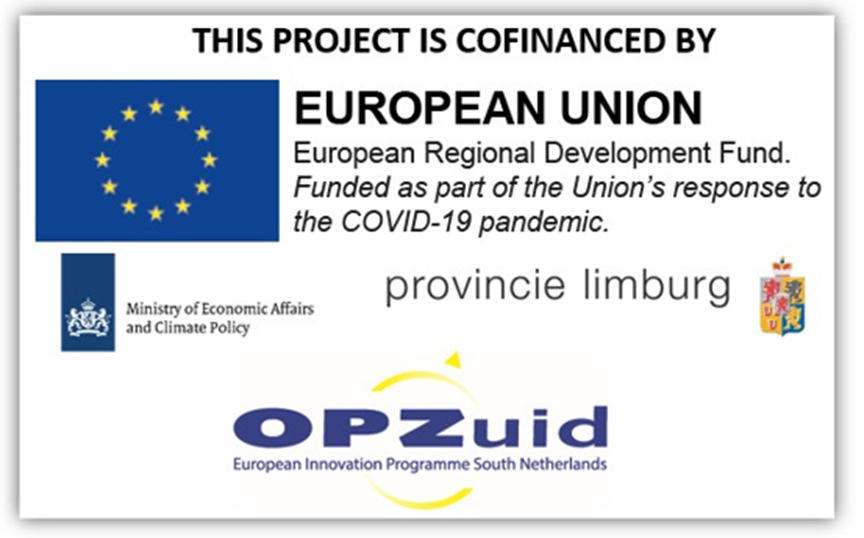
Einstein Telescope Technologies
The Einstein Telescope is a future underground gravitational wave observatory for which the Euregio Meuse-Rhine area of the Netherlands, Belgium and Germany is in the picture as a possible location. The 'Einstein Telescope Technologies' project contributes to the realization of the Einstein Telescope in various ways. Within this project, 12 knowledge institutions and companies are working together on the necessary breakthrough technologies, soil research and spin-off of technologies to other sectors. The project focuses on The Netherlands and complements other research and work within, among others, ETpathfinder, E-TEST and ET2SMEs.
Technical challenges
There are technical challenges in a number of areas to realize the Einstein Telescope (ET). For example: vibration-free cooling, better sensors, new algorithms to isolate gravitational wave signals from noise, and the realization of the world's largest ultra-high vacuum system. In addition, it is essential to properly characterize the subsurface in order to find out how the Einstein Telescope can best be installed in it. It is also important to investigate how the Einstein Telescope can be built and used in the most sustainable way possible. These aspects are all addressed in the Einstein Telescope Technologies (ETT) project, in which a consortium of 12 academic and industrial partners is working together to overcome these technical challenges.
Contribution of the University of Twente
UT takes an important role in the development of the Einstein Telescope (ET), based on the cryogenic expertise established in the research group Energy, Materials and Systems (EMS). In ET, the mirrors of the interferometers have to be cooled to a very low temperature, around 10 K (approx. ‑260 oC). Vibration-free cooling technology is required and has been developed in EMS in earlier projects for the European Space Agency. This sorption-based technology will be applied and tailored to the needs of ET. Furthermore, at UT, a dedicated Cryogenic Test Facility will be realized for developing, testing and validating cryogenic technologies for ET at the UT.
In the ETT project, UT collaborates with Nikhef and CryoWorld on the development of the cryogenic cooling system with a special focus on two aspects which are relevant for the reduction of vibrations that may limit the resolution of ET: vibrations induced by the flow of cryogenic fluids, and the design and realization of feedthroughs for the cryogenic fluid lines through the walls of the vacuum towers in which the mirrors of the interferometers are suspended.
Spin-offs beyond the horizon
The work packages of the ETT project do not only contribute directly to the Einstein Telescope. There is also the prospect of applications in other areas. A great example of how modern physics can have a huge impact on technology and our daily lives is the widely used GPS in navigation systems: without the corrections resulting from Einstein's general relativity theory, the satellite navigation would send the driver into a meadow after a few hours of driving!
Leading through Innovation
In addition to developing the necessary technology for ET and generating technological spin-off, the ETT project also aims to optimally position the Dutch industry for ET-related orders and to promote cooperation with various leading Dutch companies. Even if the ET will not be realized in the Euregio Meuse-Rhine, these parties will acquire a better starting position in future ET-related tenders. Conversely, by intensifying the collaboration with Dutch industry, the case for ET in the Euregio Meuse-Rhine will be strengthened, enabling The Netherlands to better position itself to realize a world-class scientific infrastructure within national borders with all the related positive impact on the region.
About the Einstein Telescope
In 2015, the first gravitational wave on Earth was detected by two so-called laser interferometers. Since then, dozens of gravitational waves have been observed and we literally have a completely new way to study our universe; gravitational waves offer a huge discovery potential for things in the universe cannot be explored with light. Despite the revolutionary first observations of gravitational waves, current observatories are not sensitive enough to detect gravitational waves throughout the history of our universe. This requires a better instrument: the Einstein Telescope (ET).
Financing
This project was made possible in part by a financial contribution from the European Regional Development Fund (ERDF) of the European Union, the Ministry of Economic Affairs (EZK) and Climate and the Province of Limburg.
The ERDF and EZK funds are deployed through the OPZuid 2014-2020 Program and REACT-EU.
The Operational Program ERDF 2014-2020 Southern Netherlands (OPZuid) is a European subsidy program for the provinces of Zeeland, Limburg and North Brabant. The topics are promoting innovation and the transition to a low-carbon economy. The program is mainly aimed at innovative SMEs and strengthening cooperation between the business community, knowledge institutions and governments.
REACT-EU is a direct response from the European Union to the COVID-19 pandemic. The EU is making additional resources available for the economic recovery of the regions. Projects are innovative, ready to start and contribute to one of the five social transitions. The provinces of Noord-Brabant, Limburg and Zeeland have each individually identified specific eligible activities that are important for a green, digital and resilient recovery of the economy within their province.
Links
· Project website: https://et-technologies.nl
· Stimulus website: https://www.stimulus.nl/opzuid/avada_portfolio/einstein-telescope-technologies/
